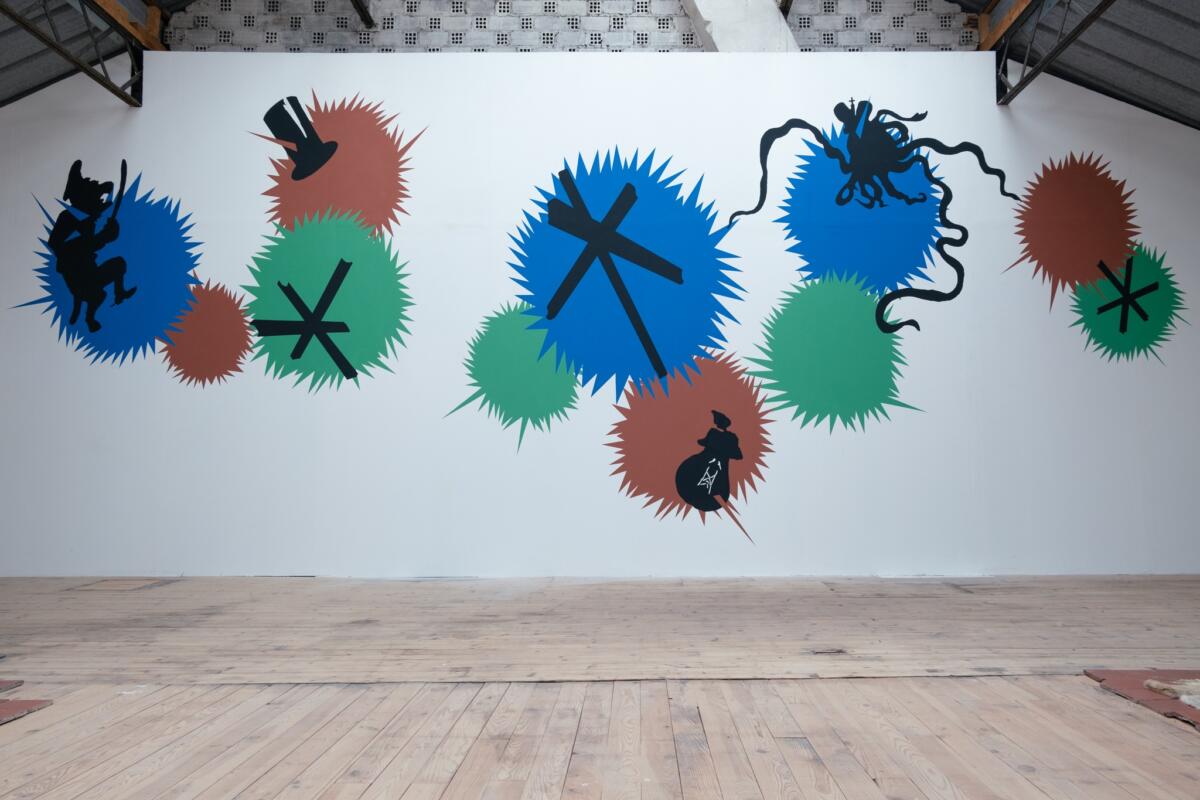
A liturgical book, the Reims Gospel or coronation text, preserved in the Carnegie library in Reims, is said to have been brought from the Ukraine by Anne of Kyiv (1024-1036), wife of Henry I and Queen of France, and to have been used for taking an oath and become king of France. These two hypotheses have fuelled a fascination for the work, probably accentuated by its precious ornamentation. But they are wrong. The facts bear this out: the two alphabets of the two books that make up the Evangeliary – Slavonic for one and Glagolitic for the other – suggest contradictory dates and uses.
Fernand Braudel (1902-1985) used the concept of a “repeating clockwork system” to designate the establishment of an economic or social model through its recurrence over time. The historian theorized it to define the recurrence of Champagne fairs, drawing inspiration from the clockwork mechanisms used to strike the hour on demand to punctuate a defined temporality – a day or, in this case, a year. The image can be transposed to myths, political or cultural, whose repetition establishes thought structures based on the repetition of stories – with the ever-present risk that misinterpretation in oral and written transmission, determined by hearsay, will perpetuate historical misconceptions, like those in the Reims Gospel. A disruption in the rhythmic mechanics, meanwhile, would herald the end of the model.
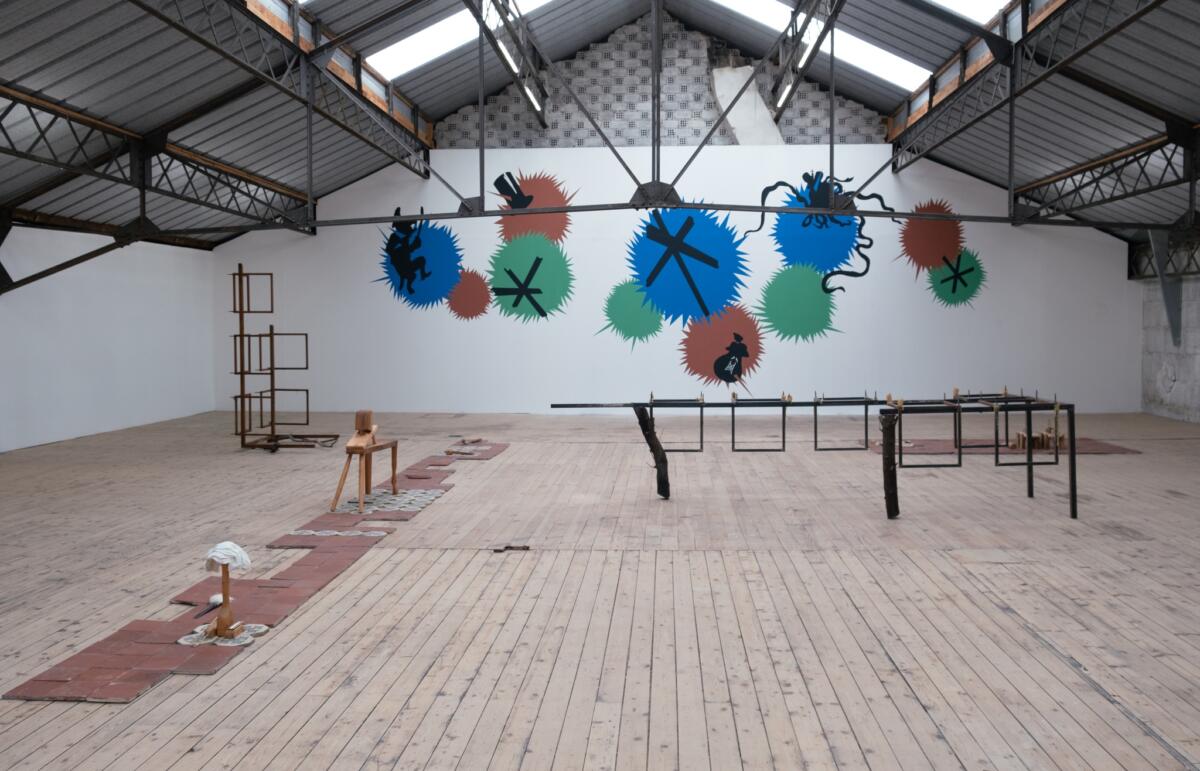
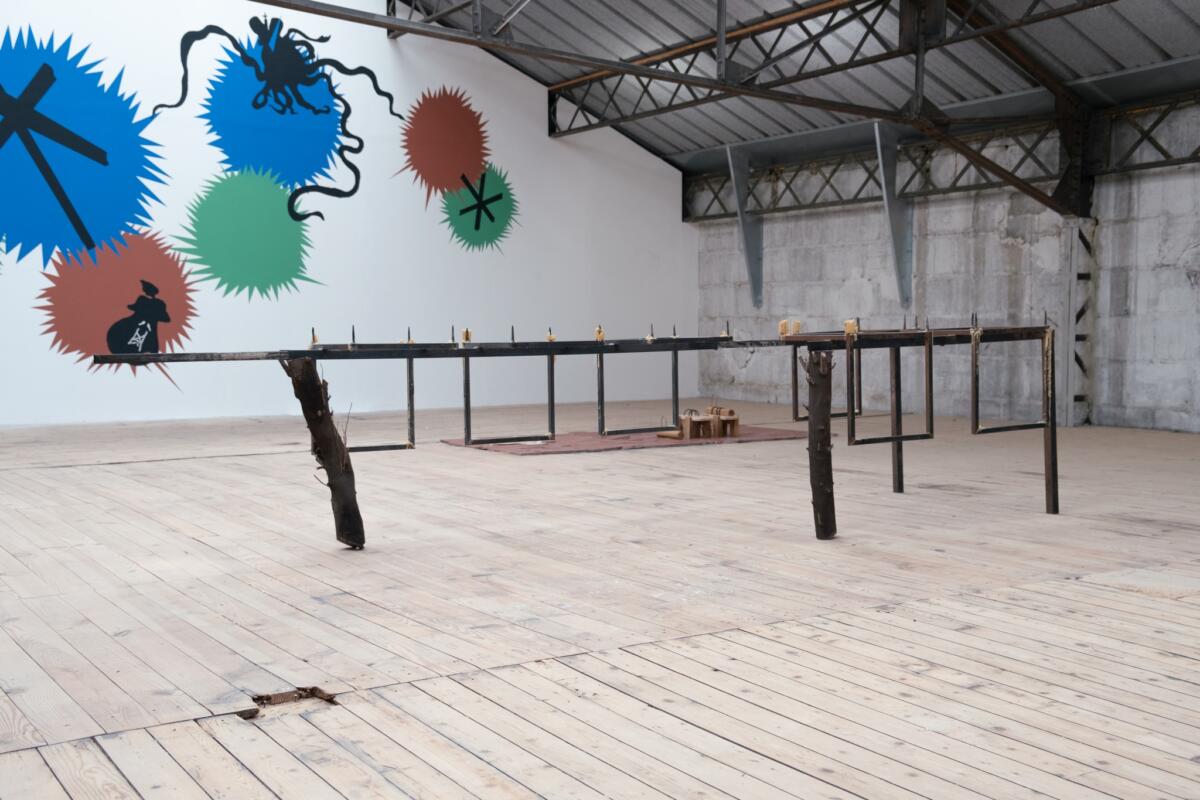
In the space of The Right Place, the works brought together leave a latent impression that certain narratives to which we have access may turn out to be a falsification that has been perpetuated to this day. Uladzimir Hramovich’s monumental fresco becomes a satirical emblem of the disparate elements forced to cohabit when a narrative is constructed. To the letters of the alphabets of the Reims Gospel, the artist has combined references to the drawings of Honoré Daumier (1808-1879), a french caricaturist who notably depicted empires and kings in the form of fruits and underwater animals. Abstract figures refers to the post-war satirical magazine written in the Belarusian language Vozhyk (Во́жык). The fresco is part of a mistrust of linear political narrative. Vozhyk, which literally translates as “hedgehog”, is also the name given to the anti-tank obstacles that inhabit Ukraine’s cities today. A presence that recalls the cyclical repetition of history.
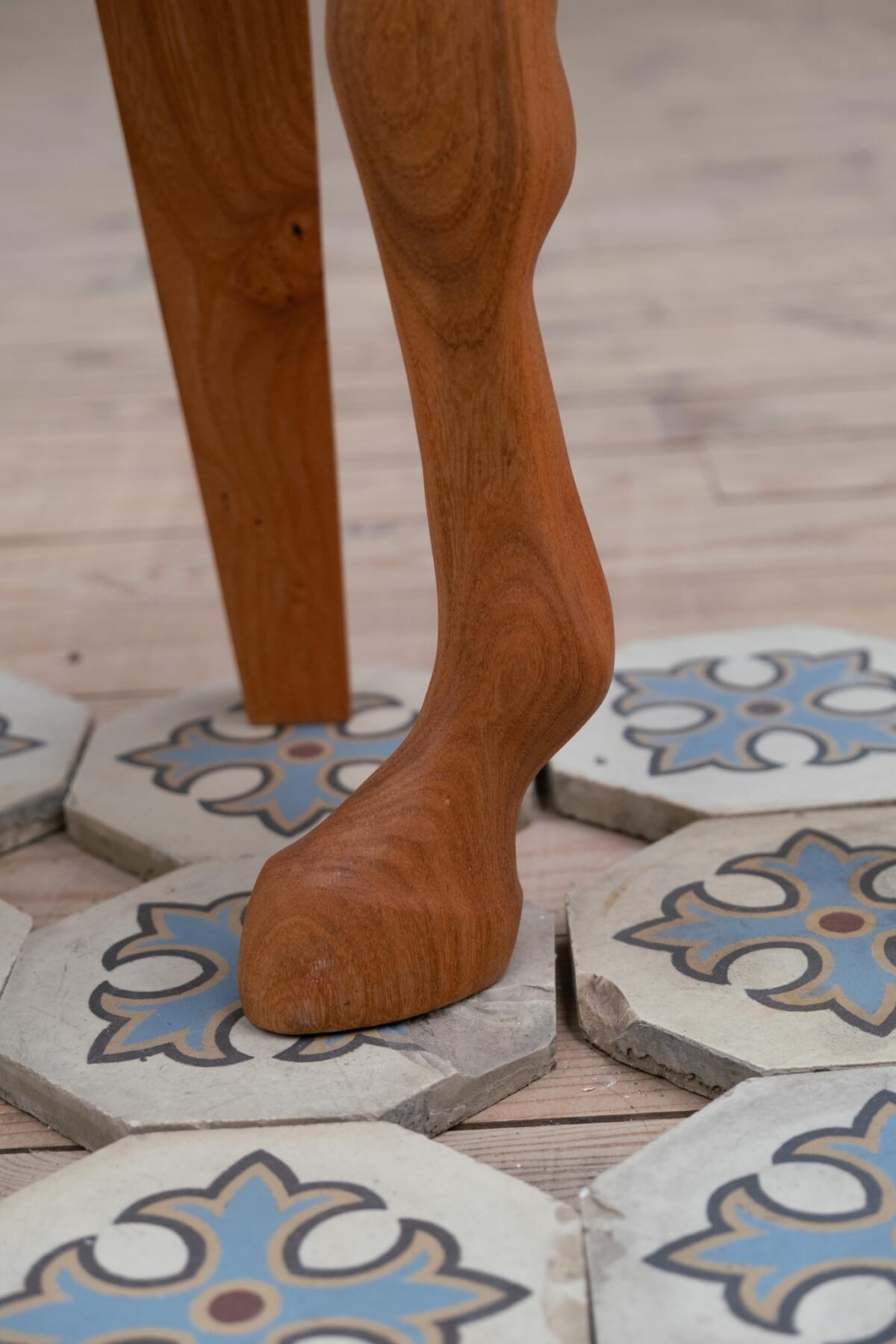

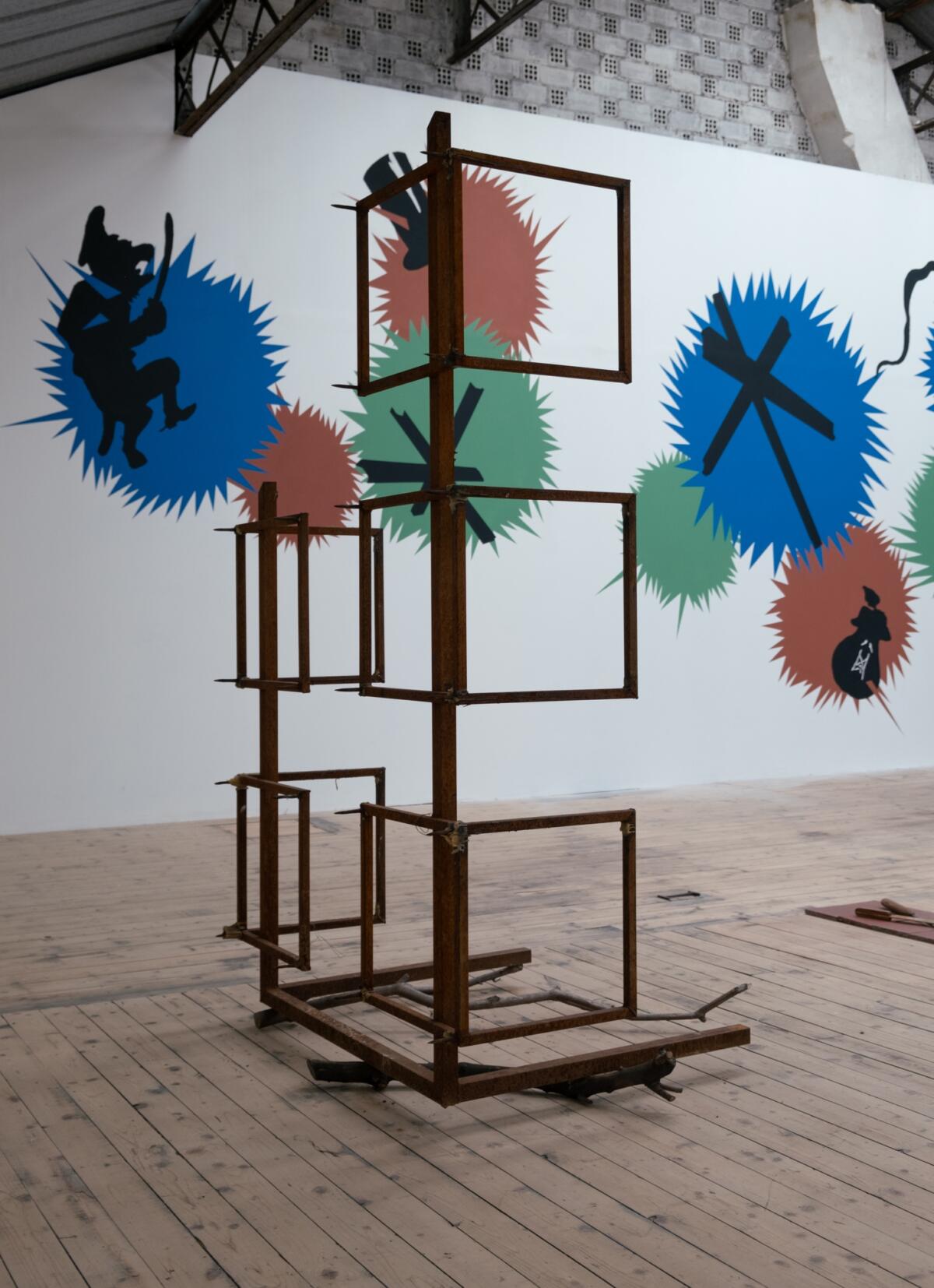
Illusions are recreated around objects dissimilar to those present in private, domestic or workshop spaces. From the perspective of the repeating clock system, a skewed perception of time and environments is created, influenced by the rumors of traditionally established narratives. Set in a procession shape, Olga Micińska’s works engage in a physical relationship with the bodies of visitors. These tool-objects, on which a set of functionalities is projected, materialize the tension that exists between tacit knowledge and vernacular traditions, becoming instead witnesses to a process of craft creation. Altered in form and material, they are linked to the relics of an installation by Zinaïda Tchelidze, denaturalized by time. Zinaïda Tchelidze is accustomed to hijacking the pre-established models of history and the politics of space. The installation, an overturned table, prefigures a questioning of the dominant social order by calling for a reassessment of the teaching of certain mythologies. In Greek mythology, the Golden Fleece – the fleece of a golden ram sacrificed to the god Zeus in Colchis, now Georgia – is an object of conquest and a symbol of heroic status. The wool from the fleece would become an object of covetousness, a precious natural resource.
The system of the repeating clock is undermined when the falsifications of the narratives are revealed. The heroes of the stories remain the same, but here the three artists put their exploits to the test of time, of forgetting, of reaffirmation, and thus of the uncertainty of their future as an established model.
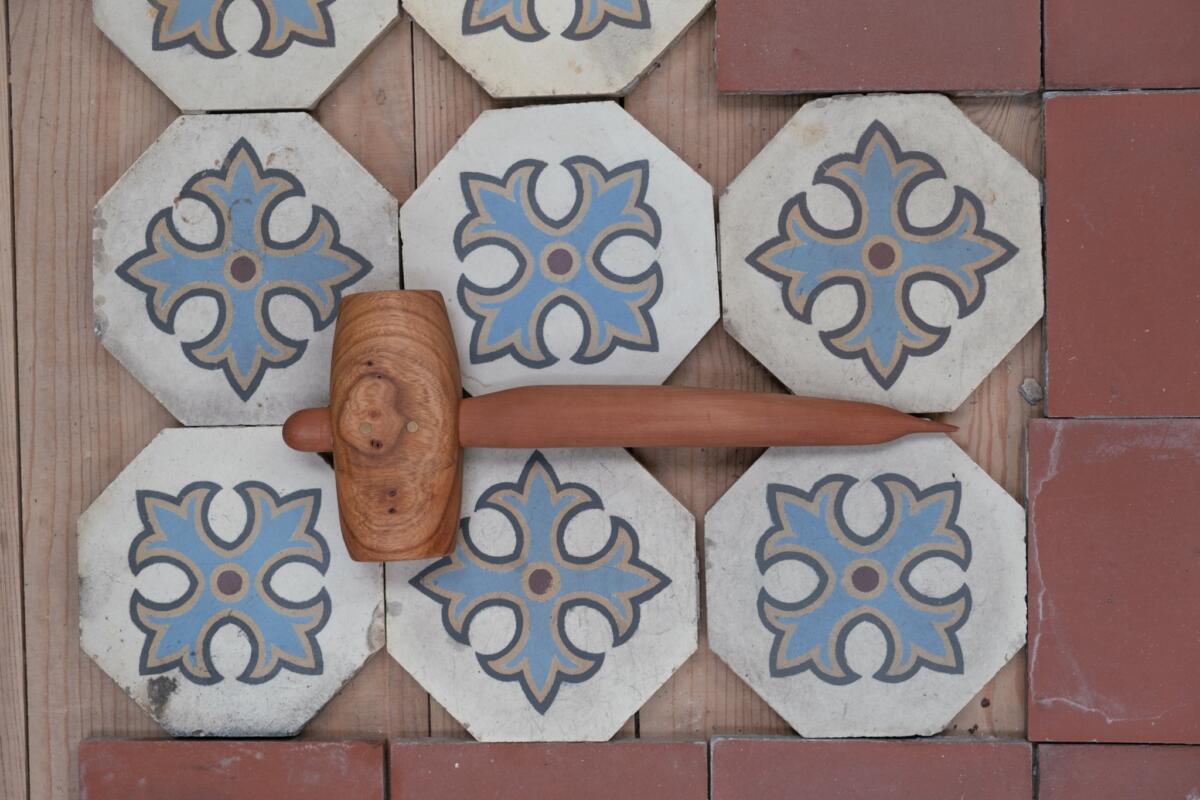
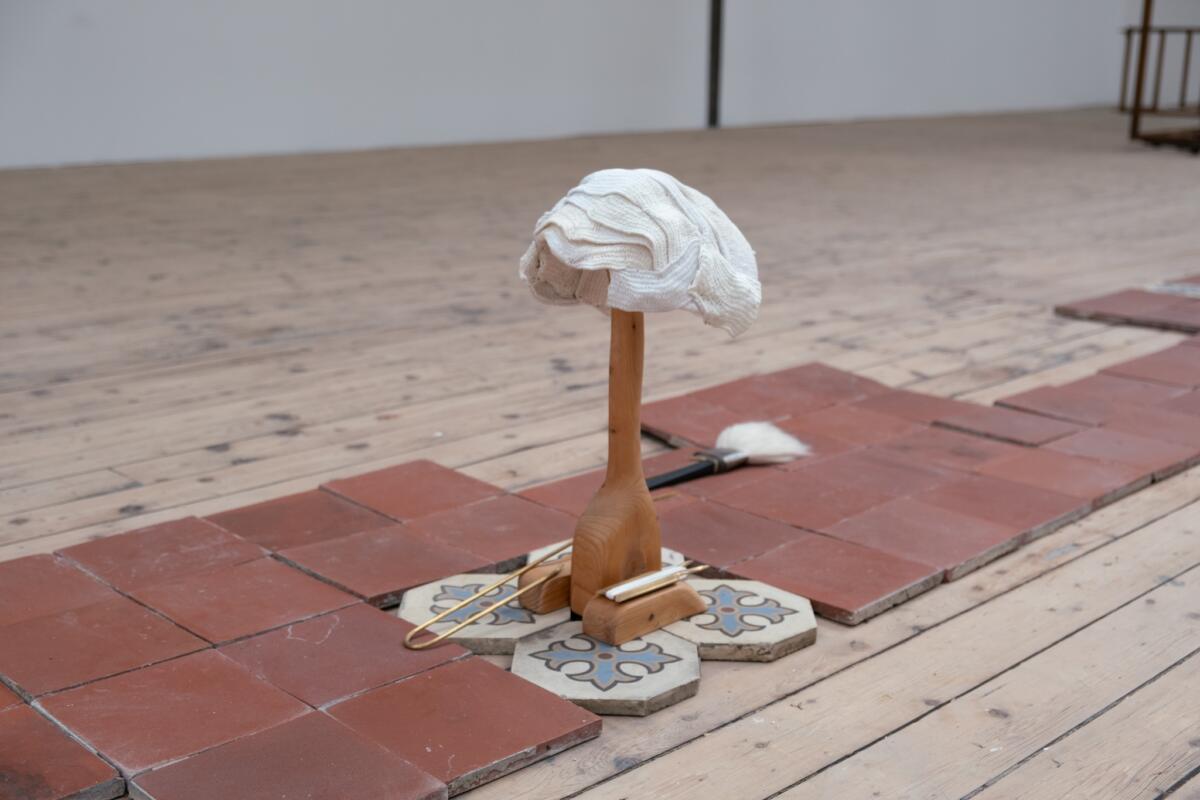
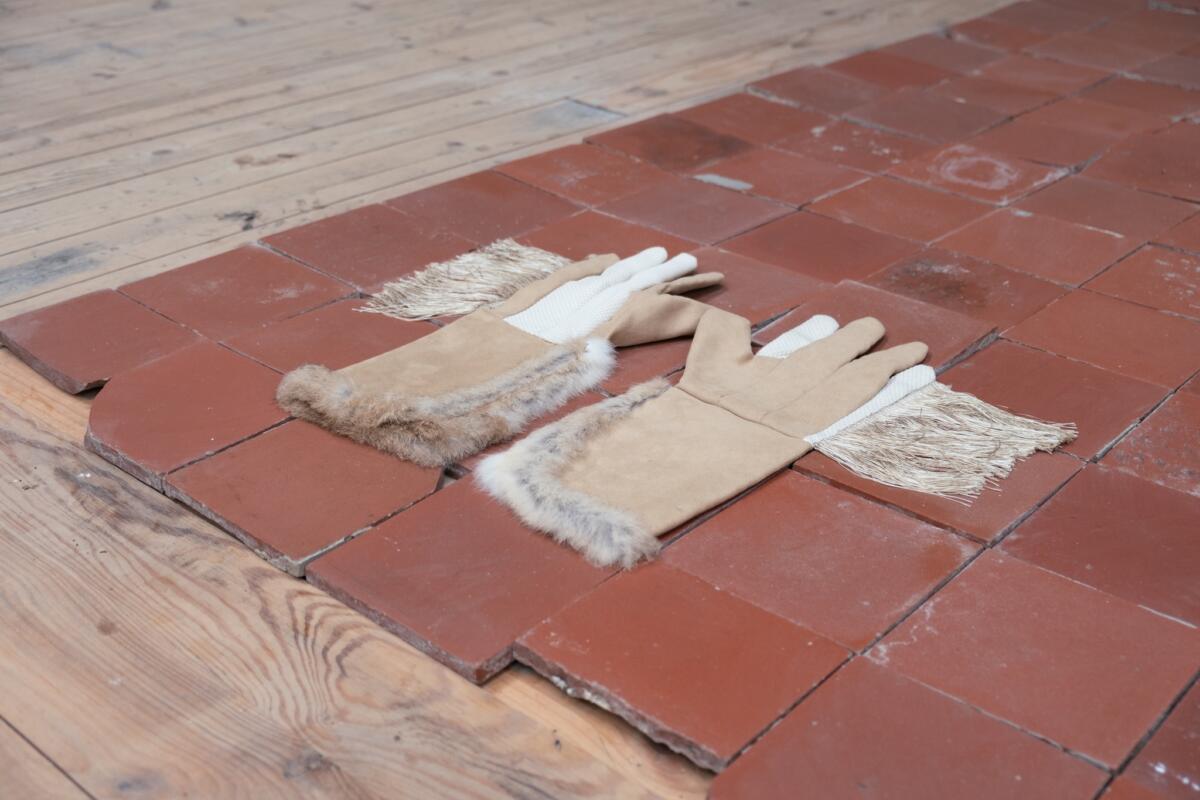
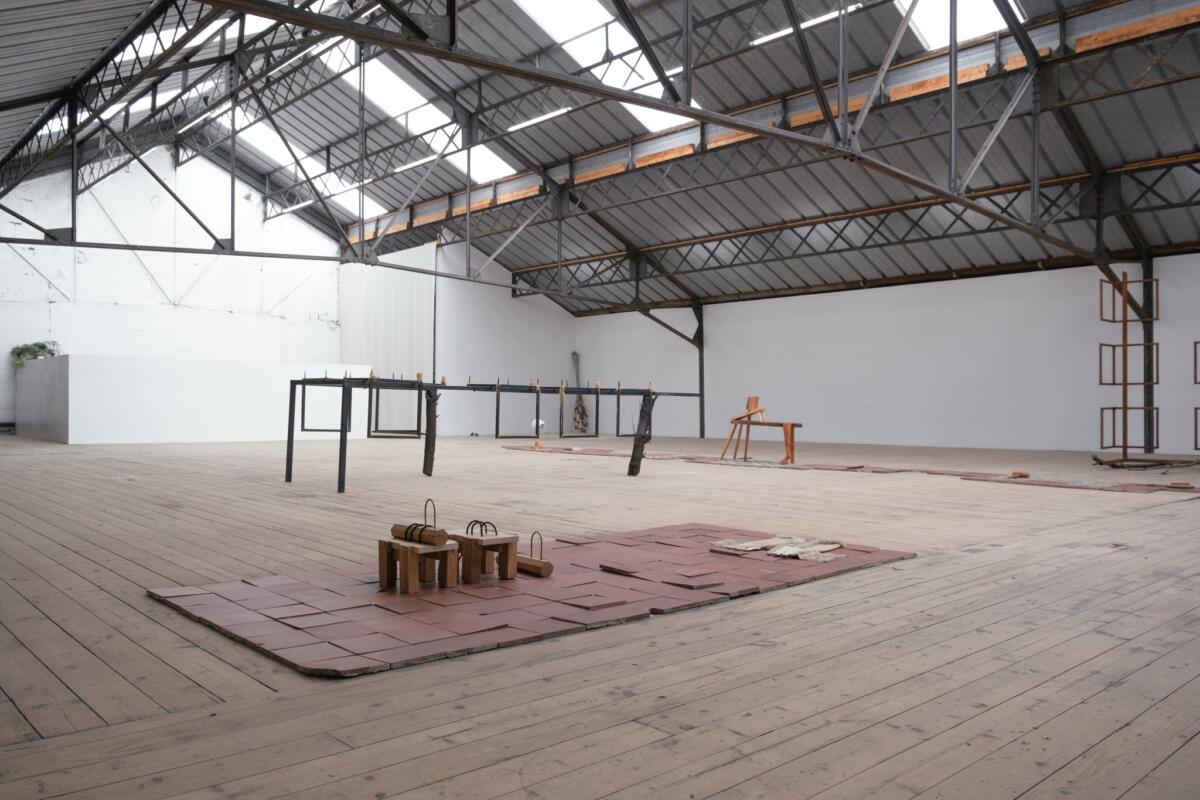
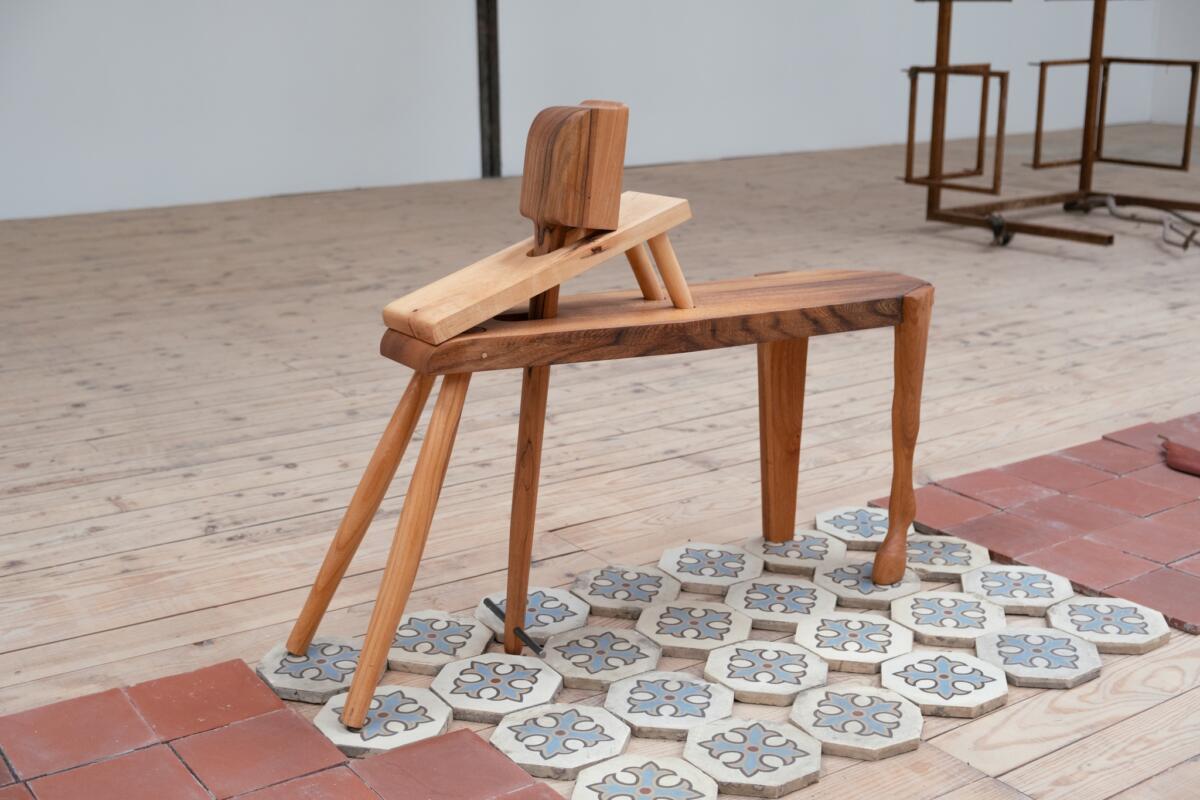


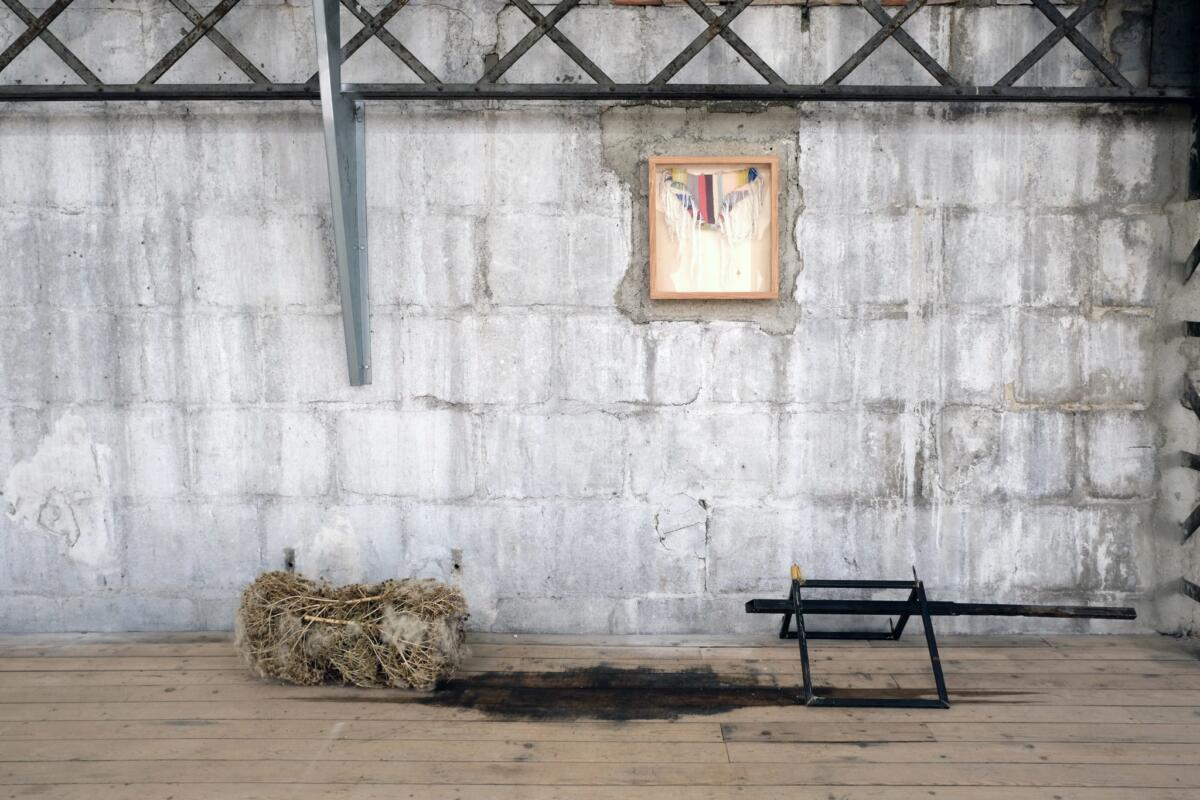
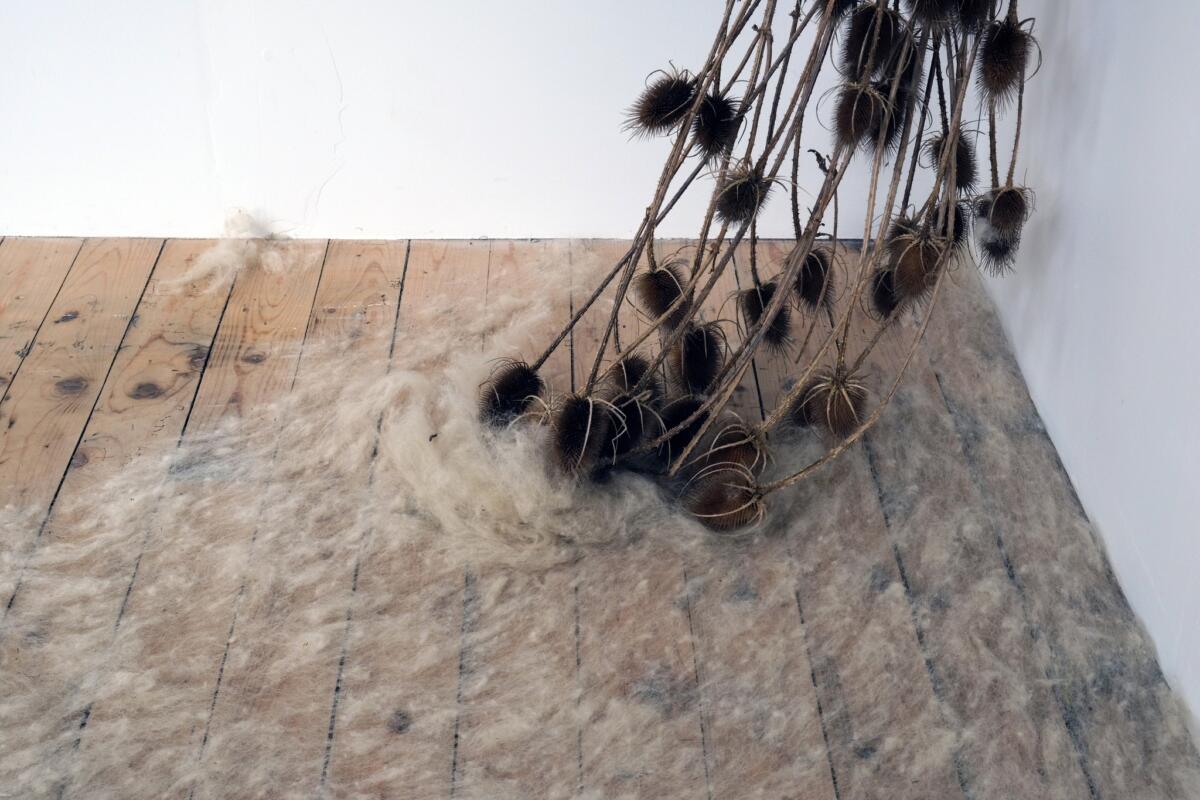
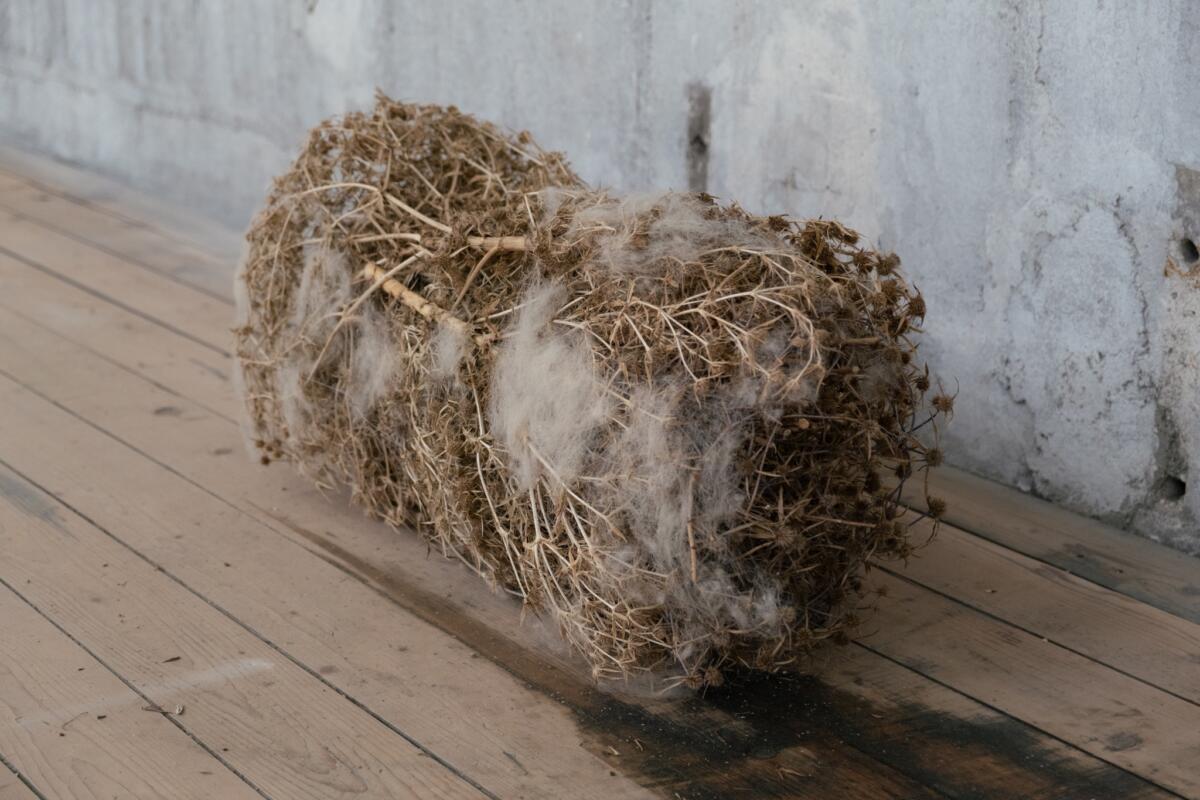

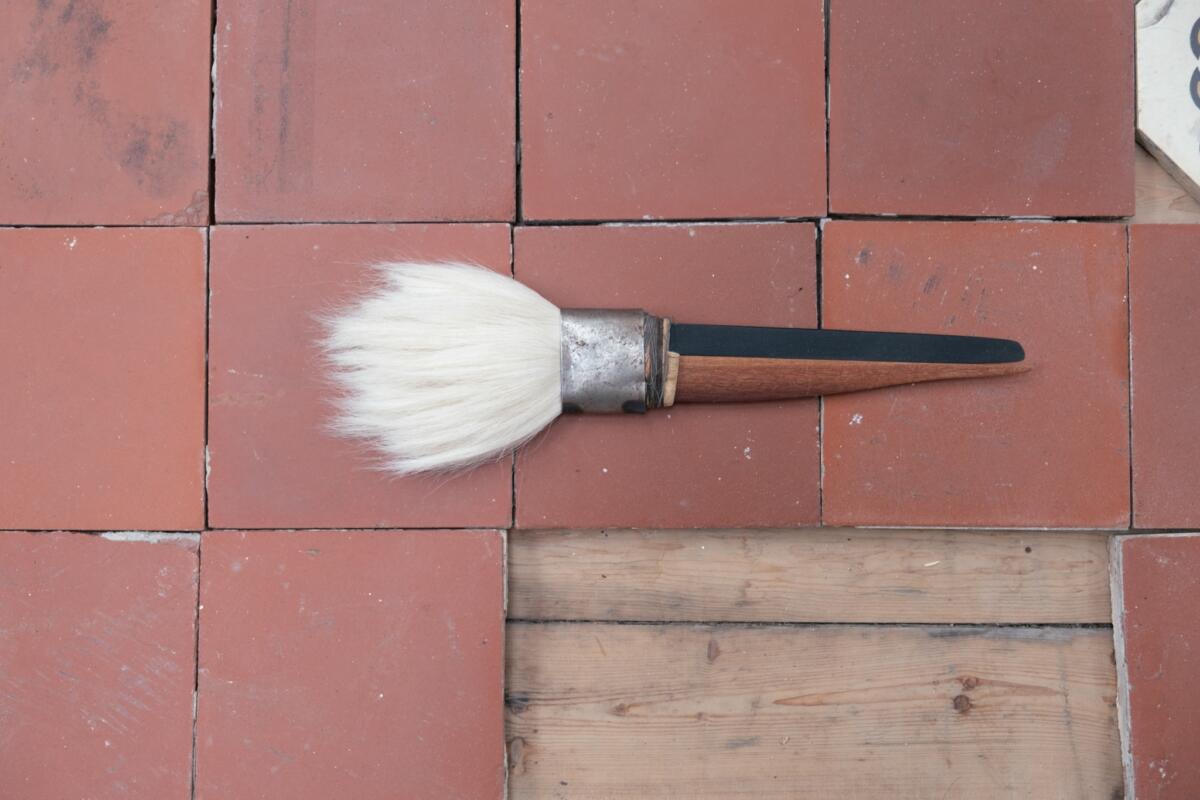

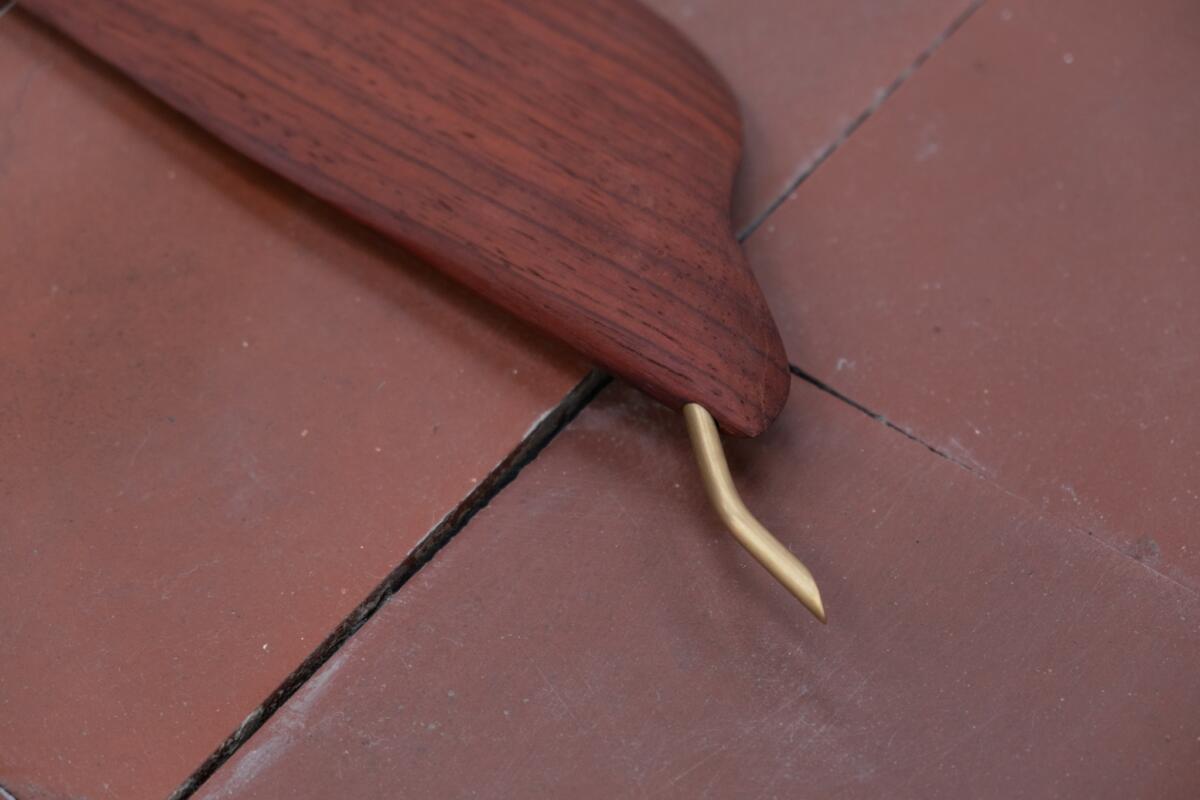
Imprint
| Artist | Uladzimir Hramovich, Olga Micińska, Zinaïda Tchelidze |
| Exhibition | L’horloge à répétition (Repeating clock) |
| Place / venue | The Left Place, Reims |
| Dates | 23.09 - 22.10.2023 |
| Curated by | Patricia Couvet |
| Photos | The Left Place, Reims |
| Index | Olga Micińska Patricia Couvet Reims The Left Place Uladzimir Hramovich Zinaïda Tchelidze |
